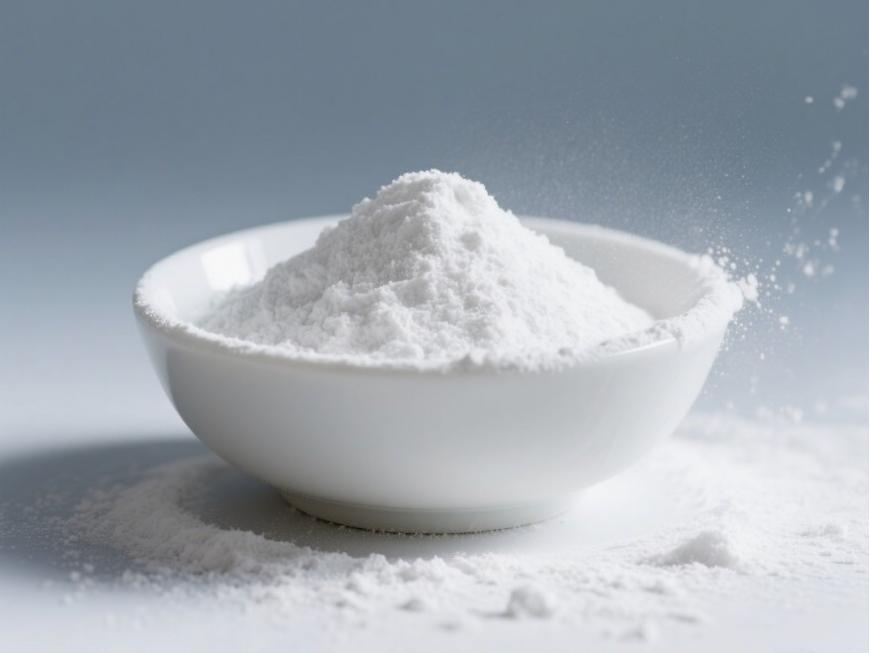What Is Melatonin?
Melatonin (MT) is a small molecule belonging to the class of indole heterocyclic hormones, widely distributed in various organisms ranging from algae to higher mammals [1-2]. In 1917, the natural melatonin molecule was first discovered in the pineal gland of animals, hence it is also known as pineal hormone or pineal gland hormone.Early research on melatonin primarily focused on animal models [3-4]. It was found that melatonin molecules can improve animal sleep, regulate circadian rhythms, enhance immune function, delay tissue aging, and exhibit antitumor effects [5-6]. In 1995, plant melatonin was first isolated and identified in vascular plant tissues,Subsequent studies quickly revealed that melatonin is present in nearly all plant species and is widely distributed in various plant organs such as roots, stems, and leaves [7–12]. In different plant tissues or organs, the natural concentration of melatonin ranges from 0.1 pg/fresh weight (g) to 30.0 μg/fresh weight (g) [13].
As one of the important endogenous hormone molecules in plants, melatonin possesses functions similar to auxin, playing a positive role in regulating seed germination, cell proliferation, plant growth and development, as well as delaying leaf senescence. Additionally, as an important free radical scavenger, melatonin possesses antioxidant properties, thereby playing a significant role in alleviating oxidative stress damage caused by biotic or abiotic stresses [14–17].
1 Physical and chemical properties of melatonin
Melatonin, also known as melatonin, pineal hormone, or pineal gland hormone, appears as a white or off-white crystalline powder. Its chemical name is N-acetyl-5-methoxytryptamine (N-acetyl-5-methoxytryptamine),with a molecular weight of 232.2783, a melting point of 116–118 °C, a molecular formula of C₁₃H₁₆N₂O₂, and a molecular structure as shown in Figure 1. Melatonin exhibits good thermal stability but is easily decomposed by light, soluble in hot water and ethanol, and almost insoluble in water, with a maximum ultraviolet absorption wavelength of 278 nm.The acetyl group and 5-methoxy functional groups in the melatonin molecular structure confer both lipophilic and hydrophilic properties, as well as high specificity for receptor binding.
2 Biosynthesis of melatonin
Natural melatonin is present at very low levels in biological cells, typically at the picogram (1 pg = 1 × 10^(−12) g) level. In higher animals, melatonin is synthesized by pineal cells in the pineal gland and is also secreted by the pineal gland located deep within the human brain [18]. In animal cells, 5-hydroxytryptamine (serotonin) can react with acetyl coenzyme A under the catalysis of N-acetyltransferase to form N-acetyl-5-hydroxytryptamine,which is then methylated by S-adenosylmethionine (SAM) under the catalytic action of acetylserotonin O-methyltransferase, forming melatonin [19].
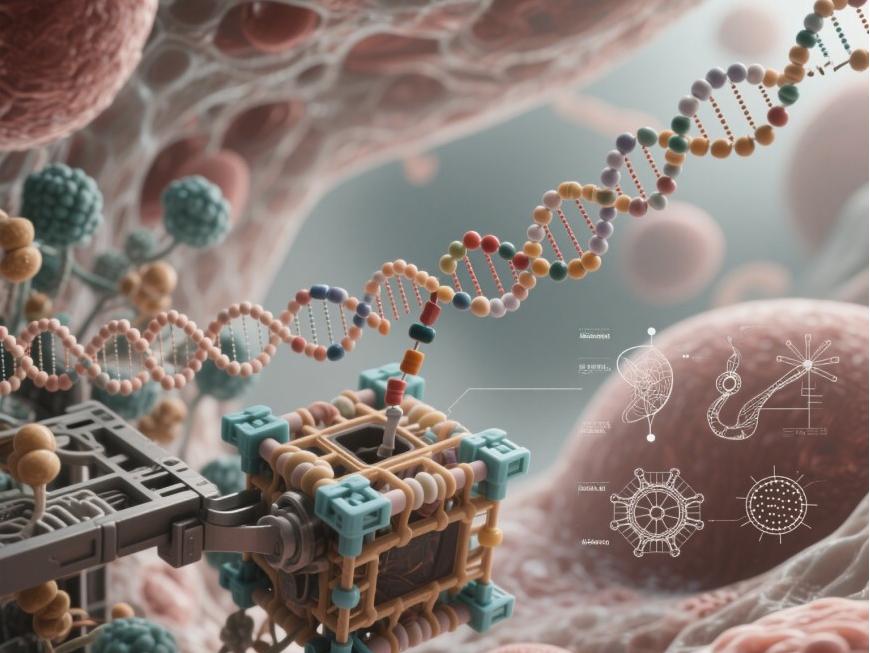
The synthesis of melatonin in higher plants primarily involves four consecutive enzymatic reactions, all of which use tryptophan as the starting material [20]. Under the catalytic action of different key enzymes, a series of intermediates are synthesized (Figure 2), ultimately producing the melatonin signaling molecule.Among these, pathways I and II are the primary pathways for endogenous melatonin synthesis in plants. Enzymatic kinetic experiments have confirmed that under normal growth conditions, melatonin molecules are synthesized via pathway I; however, when plants are subjected to stress conditions,melatonin is synthesized in large quantities via pathway II. The common intermediate product in all four pathways is 5-hydroxytryptophan, making it an important substrate for endogenous melatonin synthesis in plants [21]. Its concentration also plays a key role in determining the rate of melatonin synthesis [22].
When the rate of conversion of tryptophan to 5-hydroxytryptophan in plant tissues exceeds the rate of conversion of 5-hydroxytryptophan to melatonin, only small amounts of melatonin are synthesized in plants; conversely, melatonin synthesis significantly increases.Additionally, intermediates produced during various melatonin synthesis pathways accumulate in different subcellular compartments, such as the cytoplasm, endoplasmic reticulum (ER), and chloroplasts (Figure 2), and their concentrations also regulate the enzymatic reactions occurring in the synthesis pathways to some extent.Some key enzymes in the melatonin synthesis pathway are also rate-limiting enzymes for synthesis, such as serotonin N-deacetylase (SNAT), caffeic acid methyltransferase (COMT), and N-acetyl-5-hydroxytryptophan-O-methyltransferase (ASMT). Additionally, environmental stresses can induce specific substances in plants that may influence the melatonin biosynthetic process [21, 23–25].
The endogenous melatonin synthesis in biological organisms exhibits three major physiological characteristics: first, melatonin synthesis exhibits a distinct circadian rhythm, resulting in the lowest melatonin concentration in the body at 08:00,and begins to rise again around 8:00 PM. The concentration then gradually increases, peaking rapidly around 11:00 PM, and reaches its peak between 2:00 AM and 3:00 AM the following day. It then begins to decline gradually until secretion ceases around 8:00 AM the next day [26]. Therefore, melatonin is an endogenous biological sleep regulator rather than a sleep promoter.Secondly, melatonin synthesis is also regulated by environmental light conditions. During the day, strong light inhibits endogenous melatonin synthesis, while at night, in the absence of light, melatonin synthesis increases. However, regardless of whether it is day or night, frequent exposure to light can affect the secretion of melatonin in the body [27].This is likely the fundamental reason behind the rhythmic characteristics of melatonin synthesis in the body.

In summary, melatonin secretion is closely related to the retina, eye lens, gastrointestinal tract, and pineal gland cells in the brain [28-30]. Finally, melatonin synthesis is also associated with the age of the organism.In young individuals, melatonin secretion is typically adequate, but as age increases, melatonin secretion decreases, with an average reduction of 10% to 15% every 10 years. Therefore, melatonin synthesis decreases more significantly in the elderly, especially in those with sleep disorders, ultimately leading to disrupted sleep rhythms and dysfunction in multiple systems [31].
3 Biological Functions of Melatonin
Although natural melatonin is present at extremely low levels in biological organisms, its physiological regulatory functions are highly efficient.Melatonin has a wide range of physiological functions, involving growth, development, reproduction, and immunity in biological organisms, and its effects vary among different animals and plants.
3.1 Effects of melatonin in animals
Animal melatonin is an endogenous biological clock regulator, and its secretion in animal cells exhibits strict circadian rhythmicity. Under normal conditions, natural melatonin molecules are only produced in darkness, and even very weak light can significantly inhibit melatonin secretion. Therefore, melatonin regulates animal sleep, improves sleep quality, and has sedative and sleep-inducing effects [32].
Melatonin is also a highly effective free radical scavenger, capable of significantly inhibiting oxidative reactions in biological molecules, protecting cellular structures, preventing oxidative damage to genetic material (DNA), reducing peroxide concentrations, and exhibiting biological protective effects that delay tissue aging. Research has shown that melatonin has a certain antagonistic effect against oxidative reactions caused by exogenous factors and cell damage induced by free radical generation.

Melatonin can also effectively activate the immune stress response of animal cells, enhance the body's immune function [33], and even exhibit antitumor and anti-inflammatory effects, prevent cardiovascular diseases, control blood pressure, and prevent Alzheimer's disease, among other disease-preventive medical benefits [32].Additionally, melatonin has a close relationship with human vision. Experimental studies have confirmed that appropriate supplementation with melatonin is beneficial for preventing the occurrence of eye diseases such as cataracts, glaucoma, and macular degeneration [34].
3.2 The effects of plant melatonin
Plant melatonin is synthesized in almost all plant tissues and organs and plays a certain role in plant growth and development [35]. Melatonin is also a highly efficient free radical scavenger in plants, participating in the regulation of the oxidative/antioxidant metabolic balance within the plant body.Plant melatonin can promptly remove excess reactive oxygen species (ROS) and reactive nitrogen species (RNS) from plant tissues, protecting them from oxidative toxicity, preventing damage to cellular structures and DNA molecules, and delaying the aging process of leaves.As one of the recognized endogenous free radical scavengers, melatonin not only directly interacts with various free radicals, reactive oxygen, and reactive nitrogen species to neutralize their toxic effects on cells but also indirectly scavenges ROS or RNS by activating the antioxidant enzyme system that mediates free radical scavenging [36]. Melatonin can directly react with highly toxic hydroxyl free radicals,effectively reducing the accumulation of hydroxyl radicals; it can also react with hydrogen peroxide (H₂O₂), singlet oxygen molecules (¹O₂), peroxynitrite anions (ONOO⁻), nitrogen oxides (NO), and hypochlorous acid (HClO), thereby neutralizing their oxidative damage to plant cells.
The two main metabolites of melatonin, N1-acetyl-N2-methyl-5-methoxykynurenic acid (AFMK) and N1-acetyl-5-methoxykynurenic acid (AMK), also possess strong abilities to mitigate free radical damage,thereby further enhancing melatonin's antioxidant capacity. This phenomenon is referred to as the cascade reaction of melatonin interacting with free radicals. Recent studies have indicated that plant melatonin significantly inhibits the expression of the chloroplast vesicular protein SICV. SICV can both vesiculate a subunit (PsbO) of the photosystem II (PS II) complex,accelerating ROS production; it can also vesiculate catalase 3 (CAT3) in the cytoplasm, weakening ROS clearance, leading to ROS accumulation, and inducing programmed cell death. Therefore, plant melatonin can regulate the SICV-SIPsbO/SICAT3 module (the interaction between chloroplast vesicular protein SICV and tomato PsbO or CAT3), thereby influencing intracellular ROS metabolic homeostasis and delaying leaf senescence in plants (Figure 3) [37].

Numerous studies have shown that melatonin can significantly alleviate oxidative stress induced by abiotic or biotic stresses in plants, resist stress damage caused by adverse environmental factors, and even enhance plant stress tolerance. ROS and RNS are important signaling molecules regulating plant immune responses.Studies have found that under adverse environmental stress, ROS and RNS accumulate intracellularly, thereby promoting the synthesis of endogenous melatonin. Interestingly, during the early stages of stress, melatonin molecules can further induce the accumulation of ROS and RNS, while in the later stages of stress, melatonin can regulate the accumulation of intracellular ROS by activating antioxidant enzymes and antioxidants. Therefore, the melatonin-ROS-RNS regulatory circuit triggered by environmental stress is crucial for maintaining the balance between plant stress resistance and development [38].
4 Melatonin and environmental stress
Various plants growing in natural environments inevitably face various stress factors from the environment, including abiotic stress (such as UV-B radiation, drought, high temperatures, heavy metals, and salt stress) and biotic stress (such as pathogen infection and pest attacks).
4.1 Melatonin and Abiotic Stress
Abiotic stress is the most widespread category of stress factors affecting plant growth and development. The current abnormal and variable global climate environment has led to plants facing multiple adverse environmental factors. Extreme environments can alter plant growth and development, causing phenotypic abnormalities, reduced quality and yield, and even reduced plant survival rates or the emergence of mutant strains.There are numerous types of abiotic stress factors, with the most closely related and significant ones including light quality, temperature, water, radiation, heavy metals, and chemical pollutants [39].
During the long process of adaptive evolution, plants have evolved a series of immune defense strategies to actively respond to environmental factors, especially adverse stress factors.The wax layer formed on the surface of green plant leaves is a typical defensive protective structure, effectively preventing certain pathogens from invading [40]. Secondary metabolites within plants are also important self-protective substances, often possessing antibacterial activity that can promptly block the spread of pathogens, such as lignin and callose; Some metabolites can absorb harmful radiation from the environment, reducing radiation damage, such as flavonoids and polyphenolic compounds; other metabolites can stimulate plant cells to release specific chemicals for self-protection through specific signaling pathways, such as the salicylic acid signaling pathway and the jasmonic acid signaling pathway.

When plants are under stress, they can also activate certain immune systems within the body, such as pathogen-related molecular response patterns (PTI response) or R-gene-mediated recognition response patterns (ETI response), triggering plants to perceive pathogens and initiate immune responses. Additionally, most plants can enhance their antioxidant capacity by activating antioxidant metabolic responses to counteract the adverse effects of environmental stress [41].With the continuous development and progress of science and technology, many biological molecules involved in improving plant stress resistance have been discovered, such as hormone molecules and growth factors. Melatonin, as a widely recognized important endogenous signal regulatory molecule in plants, has also been reported to participate in regulating various stress-resistant metabolic processes in plants in recent years.
4.1.1 Temperature stress
Due to the recent drastic climate changes, temperature fluctuations have become one of the key limiting factors affecting plant growth, yield, and distribution globally. Particularly important is that photosynthesis, the most critical physiological and chemical process in plants, is highly sensitive to temperature, making plants highly susceptible to the impacts of extreme climate changes [42]. Long-term exposure to extreme temperatures reduces the photosynthetic capacity of plant leaves and decreases the synthesis of photosynthetic pigments [43–45].Extreme temperatures can also rapidly deplete water in leaves, reduce membrane rigidity, and thereby impair photosynthetic processes [46].
In higher plants, the activity of various photosynthetic enzymes, such as ribulose-1,5-bisphosphate carboxylase (Rubisco), is easily affected by high temperatures. Additionally, the synthesis rate of 1,5-bisphosphate ribulose (RuBP) and the carboxylation sites of Rubisco are also altered by temperature changes [47].High-temperature stress alters the integrity of thylakoid membranes in chloroplasts and disrupts photosystem I (PS I) and PS II. PS I and PS II are recognized as the primary sites for ROS release. Excessive reduction of chlorophyll in thylakoid reaction centers leads to the production of excessive ROS [48-50].Under high-temperature stress, the structure of chloroplasts in plant tissues is disrupted, CO₂ solubility decreases, chlorophyll synthesis is inhibited, and the affinity of Rubisco for CO₂ and the thermal stability of photosynthetic system components are reduced, thereby causing changes in plant photosynthetic rates.Extreme high temperatures can alter the lipid composition of plant cell membranes, specifically the inner membranes of the endoplasmic reticulum, mitochondria, and Golgi apparatus, impairing their selective absorption function, leading to electrolyte leakage and increased electrical conductivity.

On the other hand, high-temperature stress can also cause excessive accumulation of malondialdehyde (MDA) in cells, leading to damage to the plasma membrane [51]. Previous studies have shown that during high-temperature stress, the levels of hydrogen peroxide and MDA increase in cucumber seedlings, indicating that high-temperature stress causes a significant accumulation of reactive oxygen species (ROS) in plant tissues, leading to lipid peroxidation and damage to membrane structure and function.Exogenous application of melatonin can effectively inhibit the accumulation of hydrogen peroxide in cucumber seedlings during high-temperature stress, thereby alleviating the damage caused by ROS to cell membranes [52].
Additionally, Jahan et al. found that treatment with 100 μmol/L exogenous melatonin reduces ROS production, enhances antioxidant enzyme activity, regulates the ascorbic acid-glutathione (ASA-GSH) metabolic cycle,upregulating the expression of antioxidant enzyme-related genes, thereby enhancing the heat tolerance of tomato seedlings. Melatonin can also increase endogenous polyamine (PAs) and NO content by upregulating the expression of polyamine biosynthesis genes, thereby alleviating the cytotoxic effects of excess ROS accumulation [44]. Jahan et al.'s research further demonstrated thatmelatonin treatment increases chlorophyll content in plant leaves and suppresses high-temperature-induced leaf degradation [53].
Low-temperature stress not only causes morphological changes in plants, such as leaf water loss, reduced leaf area, and plant wilting; it also affects reproductive growth, such as delayed development, reduced flower number, and flower and fruit drop [54].Low-temperature stress also restricts photosynthetic gas exchange in plants, leading to reduced photosynthetic rates, respiratory metabolic capacity, and chlorophyll fluorescence parameters, as well as a significant increase in reactive oxygen species (ROS) in plants, ultimately resulting in structural and functional damage to plants [55]. In a study by Lou Hui et al., cotton seeds were treated with 20 μmol/L melatonin, and the results showed that the germinated cotton seeds exhibited the best embryo root growth and development,approaching normal germination levels. The antioxidant enzyme activity of cotton was found to be good, and the application of melatonin inhibited the occurrence of membrane lipid peroxidation, reducing the content of malondialdehyde and hydrogen peroxide, ultimately mitigating the damage caused by low temperatures to cotton seeds and enhancing their cold tolerance during the germination period [56].
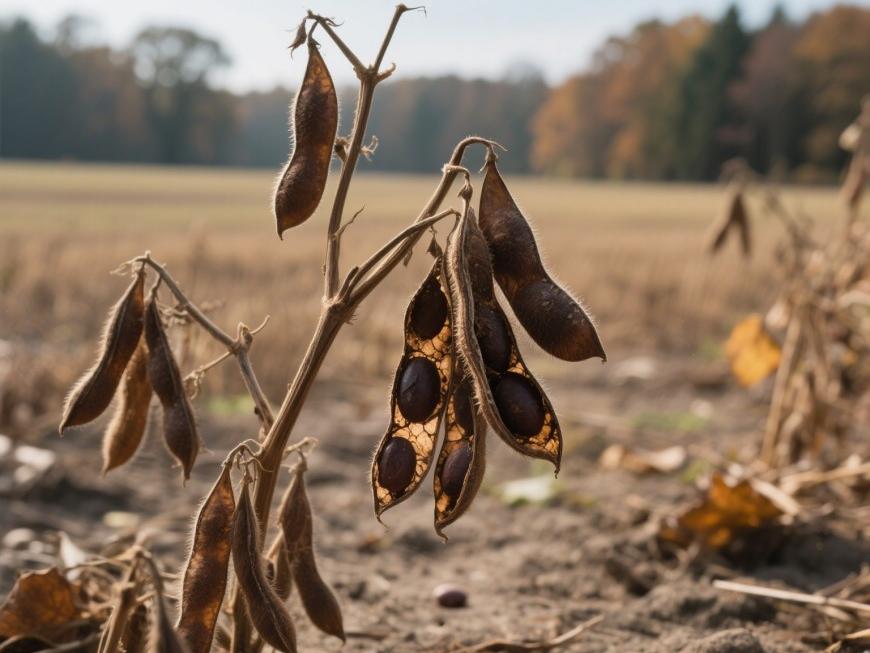
Additionally, previous studies by Li et al. indicated that local application of melatonin can induce cold tolerance in plant organs through long-distance signaling pathways [57].Furthermore, Li et al.'s research demonstrated that the use of exogenous melatonin can activate the activity of antioxidant enzymes such as superoxide dismutase (SOD), catalase (CAT), and peroxidase (POD) in tea plant tissues; on the other hand, it can also enhance the catalytic activity of genes encoding glutathione synthetase (GS), glutathione reductase (GR), and ascorbate peroxidase (APX), thereby increasing the catalytic activity of reduced glutathione (GSH), oxidized glutathione (GSH), and oxidized glutathione (GSSG), thus inhibiting the excessive accumulation of reactive oxygen species (ROS) and alleviating damage to the biological membrane system.GSH) and oxidized glutathione (glutathione oxidized, GSSG), thereby inhibiting the excessive accumulation of ROS, alleviating damage to the biological membrane system, and mitigating the adverse effects of low-temperature stress on the growth and development of tea plants [58].
4.1.2 Drought stress
Water is the foundation for normal plant survival and metabolism. Under drought stress, normal plant growth undergoes changes, including alterations in plant morphology and tissue structure to varying degrees, which affect physiological and ecological aspects, leading to inhibited photosynthesis, disrupted respiration, metabolic abnormalities, growth inhibition, and even death [59–62].Exogenous melatonin application can regulate stomatal closure, thereby reducing water loss and alleviating the effects of drought stress on plant growth [63].
Melatonin primarily regulates the mitogen-activated protein kinase (MAPK) signaling pathway and the ascorbic acid-glutathione cycle pathway, activating antioxidant enzyme activity,protect the photosynthetic system, and regulate hormone metabolism to enhance plant drought tolerance [64]. Zou et al. found that exogenous application of 100 mmol/L melatonin increased the synthesis of amino acids and nitrogen-containing compounds, thereby enhancing the drought tolerance of soybean plants [65].Zou Jingnan et al. treated spring soybeans with polyethylene glycol (PEG-6000) and simultaneously sprayed plant leaves with 100 μmol/L melatonin. The experimental results showed that melatonin increased the content of photosynthetic pigments, dry matter, and proline in spring soybeans,and improved photosynthetic rate and antioxidant enzyme activity, thereby alleviating the inhibitory effects of drought on spring soybeans [66].
Experiments by Gu Xianbin et al. also showed that under drought conditions, melatonin can enhance root system vitality, relative chlorophyll content, and relative water content in peach seedlings, thereby protecting the root system and leaves.Additionally, melatonin alleviates oxidative damage caused by drought stress in peach tree seedlings by increasing the activity of SOD, POD, and CAT, and inhibiting the production of H₂O₂ and MDA [67].Experiments by Tong Lirong et al. showed that applying appropriate concentrations of exogenous melatonin significantly improved the fresh weight, fresh weight to dry weight ratio, and relative water content of leaves in Daurian honeysuckle, thereby enhancing the plant's drought tolerance [68].
Under drought conditions, exogenous melatonin application reduces the concentrations of proline, MDA, and H₂O₂, while enhancing leaf sugar metabolism activity and antioxidant capacity, thereby inhibiting cotton boll shedding and improving cotton drought tolerance and production performance [69].Additionally, treatment with 100 μmol/L melatonin can reduce oxidative damage in soybean plants by inhibiting cell membrane damage and lowering H₂O₂ concentration, regulating the activity of superoxide dismutase, catalase, glutathione peroxidase, and ascorbate peroxidase, as well as the expression of related genes, thereby maintaining higher chlorophyll content in soybean plants,maintaining higher chlorophyll content in plants, thereby significantly promoting the growth and development of soybean plants [70].
4.1.3 Salt stress
Salt stress primarily harms plant growth by inhibiting seed germination, affecting plant growth and development, and reducing seed set. Additionally, salt stress causes the production of large amounts of reactive oxygen species (ROS) in plants, and excessive ROS accumulation further exacerbates the damage caused by salt stress to plants [71].Experiments by Sun Haoyue et al. demonstrated that the application of melatonin significantly increased the activity of antioxidant enzymes in leaves, increased the content of soluble sugars and soluble proteins in leaves, reduced MDA content and relative electrical conductivity, thereby promoting the accumulation of biomass in mung bean seedlings. This demonstrates that melatonin can effectively alleviate the inhibitory effects of NaCl stress on mung bean seedlings and enhance their salt tolerance [72].
Other studies have shown that melatonin primarily maintains cell membrane integrity by scavenging reactive oxygen species formed under salt stress, ultimately promoting cucumber seed germination [73]. In 2015, Liang et al. reported thatadding 10–20 μmol/L melatonin can delay leaf senescence and cell death in rice, and enhance rice salt tolerance by directly or indirectly counteracting the accumulation of hydrogen peroxide within cells [74]. Wei et al. demonstrated through experiments that spraying plant leaves with 200 μmol/L melatonin under salt stress significantly increased antioxidant enzyme activity, removed excess ROS molecules, reduced lipid peroxidation damage to cell membranes and other cellular structures,and melatonin application also promoted the absorption and transport of nitrogen, potassium, and silicon, reduced sodium absorption and transport, improved the dynamic balance of ions and osmotic regulation within plants, and increased the biomass of aboveground parts and root systems. Therefore, melatonin treatment significantly improved the salt tolerance of rice seedlings [75].
Yan et al. used transcriptomics sequencing and virus-induced gene silencing (VIGS) to identify the key downstream transcription factors DREB1 α and IAA3 induced by melatonin in tomato tolerance to salt and alkaline stress, indicating that melatonin can further regulate ion balance,stomatal closure, water balance, acid-base balance, and redox balance in seedlings under salt stress, thereby enhancing tomato tolerance to salt and alkaline stress [76].
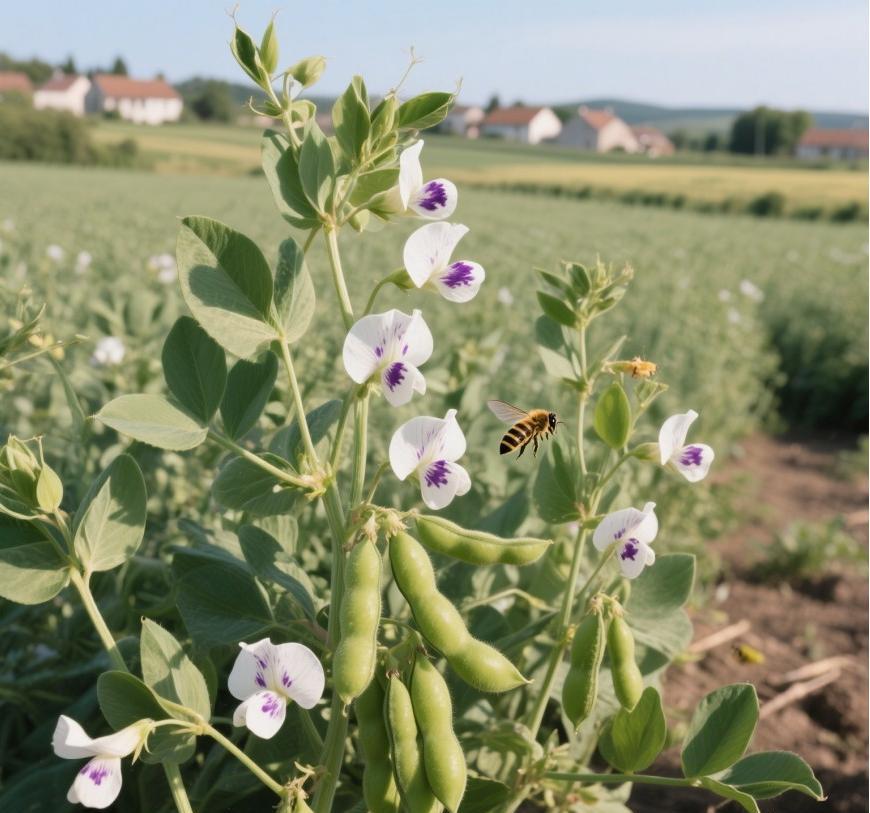
Research conducted at the Cotton Research Institute of the Chinese Academy of Agricultural Sciences found that when the melatonin synthesis gene COMT was inhibited, cotton plants exhibited greater sensitivity to salt stress. Exogenous application of melatonin treatment alleviated the salt stress sensitivity of COMT-silenced plants [77]. Additionally, exogenous melatonin treatment on normal plants can enhance cotton's salt tolerance by activating the reactive oxygen species scavenging system and Ca²⁺ signaling pathways [77]. Exogenous application or increased endogenous melatonin synthesis can both induce the transcription of key genes in the ethylene synthesis pathway (such as MYB108A and ACS1), thereby promoting ethylene biosynthesis and plant salt tolerance [78].
4.1.4 Heavy metal stress
During the process of industrialization and urbanization, industrial production, transportation, wastewater discharge, composting, and the application of pesticides and fertilizers can all lead to heavy metal pollution, resulting in increasingly severe soil heavy metal contamination [79].Heavy metals are difficult to degrade in soil and accumulate over time. Some heavy metals bind to plant proteins, rendering them inactive, ultimately affecting plant physiological, biochemical, and growth processes [80]. Additionally, heavy metals trigger free radical-mediated chain reactions, leading to the oxidation of lipids, proteins, and nucleic acids, thereby causing oxidative damage to major biomolecules [81].
Studies have shown that under cadmium stress, the application of exogenous melatonin affects the antioxidant enzyme activity of alfalfa [82]. Hodzic et al. compared the antioxidant defense systems and ROS accumulation levels in the roots and leaves of lemon balm,investigated the protective effects of melatonin on lemon balm roots and leaves under heavy metal stress. The results indicated that exogenous melatonin can mitigate the damage caused by Cd and Zn to plants by activating the antioxidant defense system within the plant, thereby enhancing plant tolerance [83].
Xu et al. used miRNA and transcriptomic analysis to discover that after Cd stress, treating radish seedlings with melatonin induced the upregulation of the RsMT1 gene, thereby enhancing radish tolerance to Cd [84].Additionally, exogenous melatonin can improve photosynthetic efficiency and enhance the accumulation of biomass in rapeseed under selenium stress [85]. Nawaz et al. found that melatonin pretreatment not only reduced vanadium transport from roots to stems, lowering vanadium content in leaves and stems, but also regulated melatonin biosynthesis and the expression of superoxide dismutase,catalase, and ascorbic acid genes, thereby enhancing the activity of superoxide dismutase and catalase in watermelon seedlings, reducing hydrogen peroxide and malondialdehyde levels, and increasing the relative chlorophyll content, photosynthetic capacity, and growth of watermelon seedlings under vanadium stress [86].

4.1.5 Radiation
In recent years, with the development of industry and increased human activities, the concentration of ozone in the atmosphere has gradually decreased.The decrease in ozone leads to an increase in UV-B radiation reaching the ground, which in turn affects terrestrial plants. Enhanced UV-B radiation can cause plant dwarfism, reduced leaf area, decreased leaf area index, delayed development, reduced photosynthesis and transpiration, and also affect the activity of various enzymes, leading to reduced crop yields, changes in quality, and even impacts on the entire plant ecosystem [87].Experimental results indicate that enhanced UV-B radiation reduces potato plant height, while exogenous melatonin treatment can increase plant height to some extent and enhance the activity of 1,5-diphosphonate-5-phosphoribose carboxylase and phosphoenolpyruvate carboxylase (PEPC),enhancing photosynthetic capacity [88].
Ma Zheng found that UV-B radiation treatment increased the expression of melatonin synthesis enzyme genes 5-hydroxytryptophan acetyl transferase,caffeic acid methyltransferase, and N-acetyl-5-hydroxytryptamine-O-methyltransferase,thereby mitigating the damage caused by UV-B stress to Arabidopsis seedlings [3]. In 2021, Yao et al. also reported that melatonin in Arabidopsis regulated the transcription of genes associated with the UV-B signal transduction pathway, activated antioxidant metabolism in Arabidopsis plants, and enhanced their resistance to UV-B stress [4].
In summary, melatonin is one of the important endogenous hormone molecules in plants, playing a positive role in plant responses to various abiotic stresses, and also enhancing plants' resistance to abiotic stress factors to a certain extent.Although there have been numerous studies on the interaction between melatonin and plant non-biotic stress, little is known about the molecular mechanisms by which melatonin regulates non-biotic stress. Therefore, future research in this field should focus on elucidating these mechanisms.

4.2 Melatonin and Biotic Stress
Melatonin's influence on plants' responses to biotic stress is primarily manifested in its important role in mitigating bacterial, fungal, and viral diseases in plants and post-harvest fruits. In 2022, the team led by Shi Haitao from Hainan University systematically reviewed the relevant research progress in this field [38].The report noted: (1) Pathogen infection can trigger the melatonin-ROS-RNS regulatory loop, thereby maintaining the balance between plant disease resistance and development. (2) Melatonin may also interact with other plant hormones to regulate plant disease resistance.For example, it has been found that melatonin acts upstream of salicylic acid (SA) during pathogen infection, positively regulating its accumulation and activating MAPK signal cascade-mediated plant immune responses; melatonin can also influence the auxin and jasmonic acid (JA) signaling pathways to enhance plant resistance to pathogens. (3) Melatonin treatment can also directly inhibit the activity of pathogens (such as various bacteria and fungi) and downregulate the expression of genes associated with pathogen virulence, thereby reducing their pathogenicity to plants. However, current research on melatonin's role in pathogen defense is still in its early stages, and the specific mechanisms by which it mediates plant immune responses remain to be further elucidated.
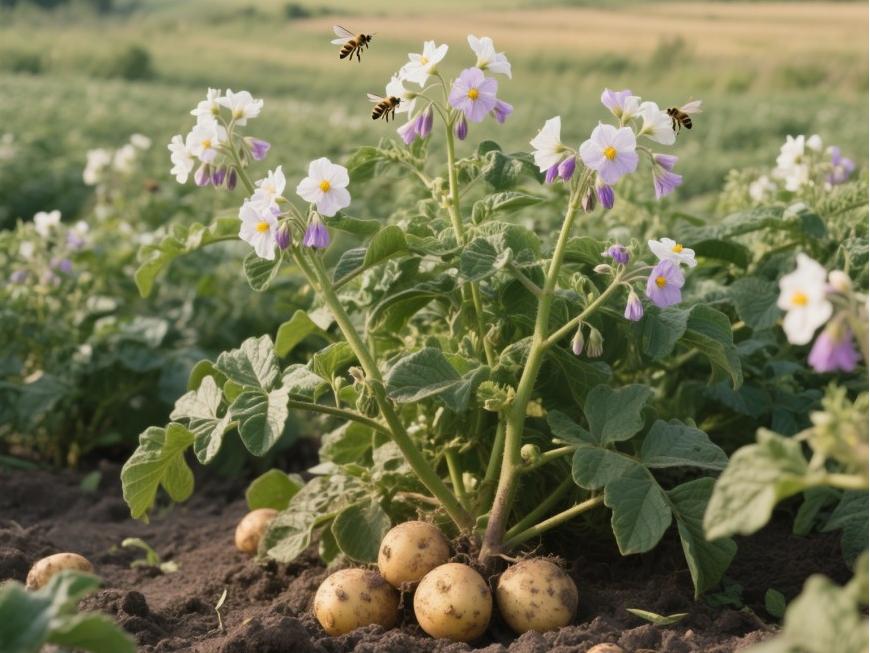
5 Conclusion and Outlook
There has been extensive research on plant melatonin, primarily focusing on its biosynthetic pathways, physiological functions, and responses to abiotic stress. Although melatonin is widely distributed in various organs and tissues of plants, its transport pathways and mechanisms of action within plants remain to be further investigated.
Additionally, melatonin is believed to act as a hormone signaling molecule in stress responses, but how plants perceive melatonin and regulate its signaling remains unclear. This will be an important direction for future studies on the biological functions of melatonin in plants.
References:
[1] Wang Junfeng, Yu Minfen, Li Dongbin, et al. Effects of melatonin on photosynthetic performance and antioxidant enzyme system of North American red oak seedlings under simulated drought stress [J]. Ecological Science, 2021, 40 (2): 167-174.
[2]Hardeland R.Melatonin in plants-diversity of levels and multiplicity of functions[J].Frontiers in Plant Science,2016,7:198.
[3] Ma, Zheng. Functional study of melatonin response to UV-B stress in Arabidopsis and expression of its synthase [D]. Xi'an: Northwest University, 2019.
[4] [4]Yao J W,Ma Z,Ma Y Q,et al.Role of melatonin in UV-B signaling pathway and UV -B stress resistance in Arabidopsis thaliana[J].Plant,Cell & Environment,2021,44( 1):114 -129.
[5]Arnao M B,Hernández - Ruiz J.Melatonin:a new plant hormone and / or a plant master regulator? [J].Trends in Plant Science, 2019,24( 1):38-48.
[6]Bose S K,Howlader P.Melatonin plays multifunctional role in horticultural crops against environmental stresses:a review [J].Environmental and Experimental Botany,2020,176:104063.
[7]Kolá J,Machá ková I,Eder J,et al.Melatonin:occurrence and daily rhythm in Chenopodium rubrum[J].Phytochemistry,1997,44 (8):1407 -1413.
[8]Murch S J,Simmons C B,Saxena P K.Melatonin in feverfew and other medicinal plants[J].The Lancet,1997,350 (9091 ):1598 - 1599.
[9]Manchester L C,Tan D X,Reiter R J,et al.High levels of melatonin in the seeds of edible plants:possible function in germ tissue protection[J].Life Sciences,2000,67 (25):3023-3029.
[10]Burkhardt S,Tan D X,Manchester L C,et al.Detection and quantification of the antioxidant melatonin in Montmorency and Balaton tart cherries (Prunus cerasus) [J].Journal of Agricultural and Food Chemistry,2001,49( 10) :4898-4902.
[11]Tan D X,Manchester L C,Reiter R J,et al.Significance of melatonin in antioxidative defense system:reactions and products [J].Biological Signals and Receptors,2000,9(3 /4):137 -159.
[12]Murch S J,Krishnaraj S,Saxena P K.Tryptophan is a precursor for melatonin and serotonin biosynthesis in in vitro regenerated St.John ’s wort ( Hypericum perforatum L.cv.Anthos) plants[J].Plant Cell Reports,2000,19(7):698-704.
[13] Liu, D., Yao, L., Xu, W., et al. Progress in the study of melatonin's role in plant stress resistance [J]. Acta Botanica Sinica, 2022, 57 (1): 111-126.
[14]Hattori A,Migitaka H,Iigo M,et al.Identification of melatonin in plants and its effects on plasma melatonin levels and binding to melatonin receptors in vertebrates[J].Biochemistry and Molecular Biology International,1995,35 (3):627-634.
[15]Moustafa -Farag M,Almoneafy A,Mahmoud A,et al.Melatonin and its protective role against biotic stress impacts on plants[J].Biomolecules,2019,10( 1):54.
[16]Dubbels R,Reiter R J,Klenke E,et al.Melatonin in edible plants identified by radioimmunoassay and by high performance liquid chromatography - mass spectrometry [J].Journal of Pineal Research,1995,18 ( 1):28-31.
[17]Sharif R,Xie C,Zhang H,et al.Melatonin and its effects on plant systems[J].Molecules,2018,23 (9):2352.
[18]Tan D X.Melatonin and brain[J].Current Neuropharmacology, 2010,8 (3):161.
[19]Tan D X,Hardeland R,Back K,et al.On the significance of an alternate pathway of melatonin synthesis via 5 -methoxytryptamine :comparisons across species[J].Journal of Pineal Research,2016, 61 ( 1):27-40.
[20]Murch S J,Alan A R,Cao J,et al.Melatonin and serotonin in flowers and fruits of Datura metel L.[J].Journal of Pineal Research,2009,47 (3):277-283.
[21]Back K,Tan D X,Reiter R J.Melatonin biosynthesis in plants :
multiple pathways catalyze tryptophan to melatonin in the cytoplasm or chloroplasts[J].Journal of Pineal Research,2016,61 ( 4 ) :426-437.
[22] Wang Rui-jie. Bioinformatics analysis of key enzymes involved in melatonin synthesis in plants and wound-induced expression of the mgfp-5 gene in tobacco [D]. Xi'an: Northwest University, 2017.
[23] [23]Tan D X,Hardeland R,Manchester L C,et al.The changing biological roles of melatonin during evolution: from an antioxidant to signals of darkness,sexual selection and fitness[J].Biological Reviews,2010,85 (3):607-623.
[24] Wang, Meng. Effects of exogenous melatonin on physiological characteristics of North American pear and du pear under NaCl stress [D]. Baoding: Hebei Agricultural University, 2021.
[25]Tan D X,Manchester L C,di Mascio P,et al.Novel rhythms of N1 -acetyl-N2 -formyl-5 -methoxykynuramine and its precursor melatonin in water hyacinth:importance for phytoremediation[J].The FASEB Journal,2007,21 (8):1724 -1729.
[26]Tilden A R,Rasmussen P,Awantang R M,et al.Melatonin cycle in the fiddler crab Uca pugilator and influence of melatonin on limb regeneration[J].Journal of Pineal Research,1997,23 (3 ):142 - 147.
[27] Feng Jiaqian, Wang Tianming, and Yang Jingwen. Research progress on the melatonin signaling system in marine animals [J]. Marine Science, 2021, 45 (11): 144-155.
[28]Sheng W L,Weng S J,Li F,et al.Immunohistological localization of Mel1a melatonin receptor in pigeon retina[J].Nature and Science of Sleep,2021,13:113 -121.
[29]Kinker G S,Ostrowski L H,Ribeiro P A C,et al.MT1 and MT2 melatonin receptors play opposite roles in brain cancer progression [J].Journal of Molecular Medicine,2021,99(2):289-301.
[30]Yasmin F,Sutradhar S,Das P,et al.Gut melatonin:a potent candidate in the diversified journey of melatonin research[J].General and Comparative Endocrinology,2021,303:113693.
[31] Liu Yanghua, Liu Shixiang. Overview of the Diagnosis and Treatment of Sleep Disorders [J]. Neurological Injury and Functional Reconstruction, 2012, 7 (2): 143-146.
[32] Liu Jianzhong, Zhu Yanjun, Zhou Lifang. Research Progress on the Physiological and Pharmacological Effects of Melatonin [J]. Journal of Wuhan University of Science and Technology (Natural Science Edition), 2004, 27 (2): 198–201.
[33] Calvo JR, González-Yanes C, Maldonado MD. The role of melatonin in the cells of the innate immunity: a review [J]. Journal of Pineal Research, 2013, 55 (2): 103-120.
[34] Xie Aiping, Peng Lihuo, Li Lingmei, et al. Current status of endogenous melatonin action and detection techniques in the human body [J]. Chinese Journal of Hygiene and Health, 2019, 29(22): 2814–2816.
[35]Arnao M B,Hernández - Ruiz J.Functions of melatonin in plants:a review[J].Journal of Pineal Research,2015,59(2):133 -150.
[36]Tan D X,Manchester L C,Terron M P,et al.One molecule,many derivatives:a never -ending interaction of melatonin with reactive oxygen and nitrogen species? [J].Journal of Pineal Research,2007,42( 1):28-42.
[37]Yu J C,Lu J Z,Cui X Y,et al.Melatonin mediates reactive oxygen species homeostasis via SlCV to regulate leaf senescence in tomato plants[J].Journal of Pineal Research,2022,73 (2):e12810.
[38]Zeng H Q,Bai Y J,Wei Y X,et al.Phytomelatonin as a central molecule in plant disease resistance[J].Journal of Experimental Botany,2022,73 ( 17):5874-5885.
[39]Zhu J K.Abiotic stress signaling and responses in plants[J].Cell, 2016,167 (2):313-324.
[40]Zhu L,Guo J S,Zhu J,et al.Enhanced expression of EsWAX1 improves drought tolerance with increased accumulation of cuticular wax and ascorbic acid in transgenic Arabidopsis [J].Plant Physiology and Biochemistry,2014,75 :24-35.
[41] Jia Xuejing, Dong Lihua, Ding Chunbang, et al. Effects of drought stress on reactive oxygen species and their scavenging systems in leaves of Sansevieria trifasciata [J]. Journal of Grassland Science, 2013, 22(5): 248-255.
[42]Tan W,Meng Q W,Brestic M,et al.Photosynthesis is improved by exogenous calcium in heat-stressed tobacco plants[J].Journal of Plant Physiology,2011,168 ( 17):2063-2071.
[43]Shah Jahan M,Wang Y,Shu S,et al.Exogenous salicylic acid increases the heat tolerance in tomato ( Solanum lycopersicum L.) by enhancing photosynthesis efficiency and improving antioxidant defense system through scavenging of reactive oxygen species[J].Scientia Horticulturae,2019,247 :421-429.
[44]Jahan M S,Shu S,Wang Y,et al.Melatonin alleviates heat - induced damage of tomato seedlings by balancing redox homeostasis and modulating polyamine and nitric oxide biosynthesis[J].BMC Plant Biology,2019,19( 1) :414.
[45]Shanmugam S,Kjaer K H,Ottosen C O,et al.The alleviating effect of elevated CO2 on heat stress susceptibility of two wheat ( Triticum aestivum L.) cultivars[J].Journal of Agronomy and Crop Science, 2013,199(5):340-350.
[46]Berry J,Bjôrkman O.Photosynthetic response and adaptation to temperature in higher plants [J].Annual Review of Plant Physiology,1980,31 :491-543.
[47]Kattge J,Knorr W.Temperature acclimation in a biochemical model of photosynthesis:a reanalysis of data from 36 species[J].Plant, Cell & Environment,2007,30(9):1176 -1190.
[48] Rexroth S,Mullineaux C W,Ellinger D,et al.The plasma membrane of the cyanobacterium Gloeobacter violaceus contains segregated bioenergetic domains[J].The Plant Cell,2011,23 (6):2379-2390.
[49]Müller P,Li X P,Niyogi K K.Non -photochemical quenching.A response to excess light energy[J].Plant Physiology,2001,125 (4):1558 -1566.
[50]Takagi D,Takumi S,Hashiguchi M,et al.Superoxide and singlet oxygen produced within the thylakoid membranes both cause photosystem Ⅰ photoinhibition[J].Plant Physiology,2016,171 (3):1626 -1634.
[51] Xie Yuling. Research progress on the effects of high temperature stress on plant physiology [J]. Jilin Agriculture, 2019(8):107-108.
[52] Xu, X., Sun, Y., Guo, X., et al. Effects of melatonin on the ascorbic acid metabolism system of cucumber seedlings under high temperature stress [J]. Journal of Applied Ecology, 2010, 21 (10): 2580–2586.
[53] Jahan M S, Shu S, Wang Y, et al. Melatonin pretreatment confers heat tolerance and repression of heat-induced senescence in tomato through the modulation of ABA- and GA-mediated pathways [J]. Frontiers in Plant Science, 2021, 12: 650955.
[54] Ding Hongying, Wang Ming, Xie Jie, et al. Plant responses to low-temperature stress and research methods [J]. Jiangsu Agricultural Sciences, 2019, 47 (14): 31-36.
[55] Li He. Regulatory role of melatonin in soybean seedling resistance to low-temperature stress [D].Daqing: Heilongjiang Bayi Agricultural University, 2021.
[56] Lou Hui, Zhao Zengqiang, Zhu Jincheng, et al. Effects of melatonin on seed germination characteristics of cotton under low-temperature stress [J]. Chinese Journal of Agricultural Science, 2021, 37 (35): 13-19.
[57]Li H,Chang J J,Zheng J X,et al.Local melatonin application induces cold tolerance in distant organs of Citrullus lanatus L.via long distance transport[J].Scientific Reports,2017,7 :40858.
[58]Li J H,Arkorful E,Cheng S Y,et al.Alleviation of cold damage by exogenous application of melatonin in vegetatively propagated tea plant [Camellia sinensis ( L.) O.Kuntze] [J].Scientia Horticulturae,2018,238:356-362.
[59] Luo Huiying, Jin Jie, Zhao Qiongling, et al. Research progress on drought stress in Moringa oleifera [J]. Chinese Tropical Agriculture, 2021 (4): 21-23, 72.
[60] He Xiaosan, Xu Linchu, Gong Chun, et al. Effects of drought stress on photosynthetic characteristics of 'Ganwu 12’ seedlings [J].Journal of Central South University of Forestry and Technology, 2018, 38 (12): 52-61.
[61] Deng Huiming, Long Congying, Cai Shizhen, et al. Effects of Different Water Stress on Morphological and Physiological Characteristics of Young Seedlings of Artemisia annua [J]. Journal of Northwest Plant Science, 2018, 38 (6): 1099-1108.
[62] Zheng Pengli, Huang Xiaorong, Fei Yongjun, et al. Effects of water stress on photosynthetic physiological characteristics of young Cinnamomum camphora trees [J]. Journal of Central South University of Forestry and Technology, 2019, 39(10): 64-70.
[63]Campos C N,Ávila R G,de Souza K R D.Melatonin reduces oxidative stress and promotes drought tolerance in young Coffea arabica L.plants[J].Agricultural Water Management,2019,211:37-47.
[64]Meng J F,Xu T F,Wang Z Z,et al.The ameliorative effects of exogenous melatonin on grape cuttings under water - deficient stress:antioxidant metabolites ,leaf anatomy ,and chloroplast morphology[J].Journal of Pineal Research,2014,57 (2 ):200 - 212.
[65]Zou J N,Yu H,Yu Q,et al.Physiological and UPLC -MS /MS widely targeted metabolites mechanisms of alleviation of drought stress - induced soybean growth inhibition by melatonin [J].Industrial Crops and Products,2021,163:113323.
[66] Zou Jingnan, Cao Liang, Wang Mengxue, et al. Effects of exogenous melatonin on photosynthesis and physiology of soybean pod development under drought stress [J]. Journal of Ecology, 2019, 38 (9): 2709–2718.
[67] Gu Xianbin, Lu Linghong, Song Genhua, et al. Mitigating effects of exogenous melatonin pretreatment on the growth of peach seedlings under drought stress [J]. Journal of Plant Physiology, 2022, 58 (2): 309–318.
[68] Tong Lirong, Ni Shungang, Ren Xingyuan, et al. Effects of melatonin on the growth and leaf water physiology of Daurian honeysuckle seedlings under drought stress [J]. Journal of Grassland Science, 2021, 29 (8): 1682–1688.
[69]Khattak W A,He J Q,Abdalmegeed D,et al.Foliar melatoninstimulates cotton boll distribution characteristics by modifying leaf sugar metabolism and antioxidant activities during drought conditions [J].Physiologia Plantarum,2022,174( 1):e13526.
[70]Imran M,Latif Khan A,Shahzad R,et al.Exogenous melatonin induces drought stress tolerance by promoting plant growth and antioxidant defence system of soybean plants[J].AoB Plants, 2021,13(4):plab026.
[71]Choudhary S,Wani K I,Naeem M,et al.Cellular responses,osmotic adjustments,and role of osmolytes in providing salt stress resilience in higher plants: polyamines and nitric oxide crosstalk[J].Journal of Plant Growth Regulation,2023,42:539-553.
[72] Sun Haoyue, Wu Hongbin, Li Ming, et al. Effects of melatonin seed soaking on the growth and physiological characteristics of mung bean seedlings under salt stress [J]. Henan Agricultural Sciences, 2021, 50 (12): 111-120.
[73]Zhang H J,Zhang N,Yang R C,et al.Melatonin promotes seed germination under high salinity by regulating antioxidant systems, ABA and GA4 interaction in cucumber ( Cucumis sativus L.) [J].Journal of Pineal Research,2014,57 (3):269-279.
[74]Liang C Z,Zheng G Y,Li W Z,et al.Melatonin delays leaf senescence and enhances salt stress tolerance in rice[J].Journal of Pineal Research,2015,59( 1):91 -101.
[75]Wei L,Zhao H Y,Wang B X,et al.Exogenous melatonin improves the growth of rice seedlings by regulating redox balance and ion homeostasis under salt stress [J].Journal of Plant Growth Regulation,2022,41 (6):2108-2121.
[76]Yan Y Y,Jing X,Tang H M,et al.Using transcriptome to discover a novel melatonin-induced sodic alkaline stress resistant pathway in Solanum lycopersicum L.[J].Plant and Cell Physiology,2019,60 (9):2051-2064.
[77]Zhang Y X,Fan Y P,Rui C,et al.Melatonin improves cotton salt tolerance by regulating ROS scavenging system and Ca2 + signal transduction[J].Frontiers in Plant Science,2021,12 :693690.
[78]Xu L L,Xiang G Q,Sun Q H,et al.Melatonin enhances salt tolerance by promoting MYB108A -mediated ethylene biosynthesis in grapevines[J].Horticulture Research,2019,6:114.
[79]Li Z Y,Ma Z W,van der Kuijp T J,et al.A review of soil heavy metal pollution from mines in China:pollution and health risk assessment[J].Science of The Total Environment,2014,468 /469:843-853.
[80]Figlioli F,Sorrentino M C,Memoli V,et al.Overall plant responses to Cd and Pb metal stress in maize:growth pattern,ultrastructure, and photosynthetic activity [J].Environmental Science and Pollution Research,2019,26(2):1781 -1790.
[81]Yadav S K.Heavy metals toxicity in plants:an overview on the role of glutathione and phytochelatins in heavy metal stress tolerance of plants[J].South African Journal of Botany,2010,76 (2 ):167 - 179.
[82]Gu Q,Chen Z P,Yu X L,et al.Melatonin confers plant tolerance against cadmium stress via the decrease of cadmium accumulation and reestablishment of microRNA - mediated redox homeostasis [J].Plant Science,2017,261 :28-37.
[83]Hodzic E,Galijasevic S,Balaban M,et al.The protective role of melatonin under heavy metal -induced stress in Melissa officinalis L.[J].Turkish Journal of Chemistry,2021,45 (3) :737-748.
[84]Xu L,Zhang F,Tang M J,et al.Melatonin confers cadmium tolerance by modulating critical heavy metal chelators and transporters in radish plants[J].Journal of Pineal Research,2020, 69( 1):e12659.
[85]Ulhassan Z,Huang Q,Gill R A,et al.Protective mechanisms of melatonin against selenium toxicity in Brassica napus:insights into physiological traits,thiol biosynthesis and antioxidant machinery [J].BMC Plant Biology,2019,19( 1):507.
[86]Nawaz M A,Jiao Y Y,Chen C,et al.Melatonin pretreatment improves vanadium stress tolerance of watermelon seedlings by reducing vanadium concentration in the leaves and regulating melatonin biosynthesis and antioxidant - related gene expression [J].Journal of Plant Physiology,2018,220:115 -127.
[87]Vanhaelewyn L,van der Straeten D,de Coninck B,et al.Ultraviolet radiation from a plant perspective:the plant-microorganism context [J].Frontiers in plant science,2020,11 :597642.
[88] Wan Liqian, Li Guangda, and Qiu Lan, et al. Effects of exogenous melatonin on photosynthesis and fluorescence characteristics of potatoes under UV-B radiation [J]. Journal of North China Agriculture, 2021, 36 (4): 116–123.
-
Prev
What Is the Use of Melatonin in Animal Breeding?
-
Next
What Are Medium Long Chain Triglycerides?


 English
English French
French Spanish
Spanish Russian
Russian Korean
Korean Japanese
Japanese